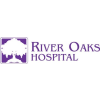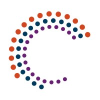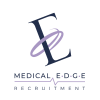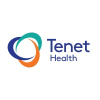JOB SUMMARY : The Registered Nurse is responsible for the delivery of safe patient care utilizing the nursing process of assessment, planning, implementation and evaluation.
Provides direct patient care within the scope of practice. The Registered Nurse also directs and guides patient / family teaching and activities of other nursing personnel while maintaining standards of professional nursing care in Emergency Department.
The Registered Nurse is directly responsible and accountable for the care given to his / her patients in the Emergency Department.
He / She communicates with the physician about the changes in the patient's clinical condition including results of the diagnostic studies and sypmtomatology.
Is able to respond quickly and accurately to changes in the condition and / or response to treatment. Is knowledgeable about EMTALA regulations and reporting of child / adult abuse to appropriate agencies and Hospital Social Worker.
Maintains patient privacy and confidentiality. BONUS AVAILABLE FOR EXPERIENCED NIGHT SHIFT RN.
EDUCATION, EXPERIENCE, TRAINING
- Current and valid state RN License.
- Current BLS certificate upon hire or obtain within 30 days.
- Current ACLS certificate or within six months of hire.
- Current PALS certificate or within six months of hire.
- Minimum of one year experience as a staff nurse RN in an acute care hospital setting preferred; E.R. setting preferred.
- Certified Emergency Nurse (CEN) preferred.
- Associate's Degree in Nursing required; Bachelor of Science in Nursing (BSN) preferred.
- Behavioral violence prevention certification as required.
- Trauma Nurse Core Course (TNNC) within 18 months of hire required.
ESSENTIAL FUNCTIONS
Recognizes signs of abuse and reports appropriately to the hospital social worker and / or Adult / Child Protective Services.
Familiar with the EMTALA Regulations.
Responsible for the observation and direction of patient lifts, mobilization, and shall participate as needed in patient handling.
Attends and maintains mandatory training in safe patient handling, trained in safe lifting techniques, includes but not limited to :
1) Appropriate use of lifting devices and equipment.
2) Five areas of body exposure : vertical, lateral, bariatric repositioning and ambulation.
3) Use of lifting devices to handle patients safely.
Uses professional judgment and clinical assessment in safe patient handling that are consistent with Safe Patient Handling policies.
Monitors hemodynamic / cardiac status of patient and correctly interprets the results. Reports to the physician any abnormal results.
Initiates discharge and patient / family education planning with proper documentation on the patient record or electronic medical record (EMR).
Adjusts frequency of assessment as appropriate for patient's condition and reassesses nursing action for effectiveness in achieving desired outcome.
Establishes priorities of patient care based on essential needs and available resources of time, equipment, personnel and supplies.
Follows hospital policy regarding chest pain, acute MI and pneumonia protocols.
Reviews and implements new orders and keeps physician informed of changes in patient's clinical status. Follows protocol consistently regarding telephone / verbal orders and the use of read back .
Accurately records and / or processes orders in a timely manner, i.e. ASA administration and EKG and Troponin for all Chest Pain patients immediately upon presenting in ED.
Demonstrates empathy and respect for patients by explaining all procedures providing privacy and allowing patients to express emotional needs.
Initiates, titrates and safely monitors all IV medications and blood components. Uses two patient identifiers consistently when drawing lab, medicating, or performing any procedure on a patient and blood components.
Assists physicians with special tests and procedures and uses universal protocol time out for any invasive / bedside procedure.
Gives thorough, detailed efficient change of shift report or upon patient intra-department transfer to ensure consistency in the plan of care.
Uses the SBAR communication methodology in all reporting.
Ensures consistently that all clinical alarms i.e., cardiac monitor alarms are set with the appropriate parameters for the patient and are audible at all times.
Does not use unacceptable abbreviations in documentation. Documents evidence of nursing care on the patient's medical record in a legible, concise, timely and complete manner.
Avoids and prevents injury to self and patients by applying the principles of body mechanics. Maintains a safe environment, functioning with an awareness and application of safety issues identified within the unit / facility i.
e., suction and oxygen immediately available at all bed side.
Ensures Crash cart, defibrillator function have been checked per protocol and after each code, appropriate items are immediately replaced and indicated by signature on the cart checklist.
Serves as a resource to staff in area of clinical and managerial expertise.
Documents evidence of nursing care in the patient's medical record (EMR) based upon the nursing process in a legible, concise, timely and complete manner.
Demonstrates the ability to adequately assess and reassess pain on triage, after giving pain medication and upon discharge and proper documentation on the patient record.
Is in compliance with information contained in the Infection Manual (i.e. OSHA blood borne pathogen standards, CDC Guidelines) and demonstrates appropriate use of personal protective equipment (e.
g., gloves, gown, masks, and goggles) and hand hygiene techniques.








